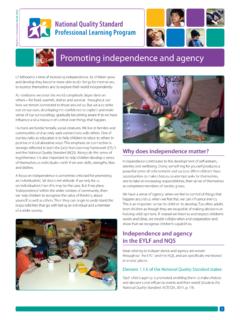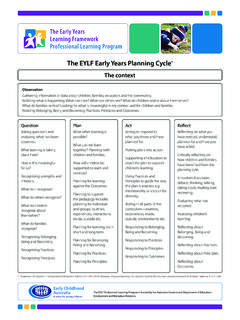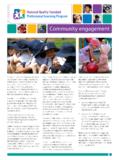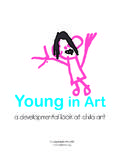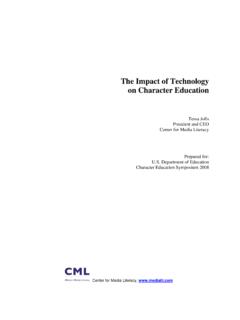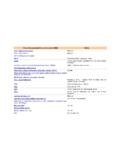Transcription of Tracking learning - A voice for young children
1 1 EYLFPLP e-Newsletter No. 26 2011 Tracking learningSetting the sceneThe hot topic over 2011 raised in conversations, on the Forum and Facebook, at workshops and in-field visits has been How can we best record evidence of children s learning ? E-News Issue 6 this year focused on learning Outcomes; Issues 8 and 14 were on planning for learning ; and e-News 9 and 10 talked about documenting , it s time to dig a bit deeper into issues around documentation and Early Years learning Framework (EYLF) reminds us (p.)
2 17) that:Assessment for children s learning .. is part of an ongoing cycle that includes planning, documenting and evaluating children s assessment in early childhood settings emphasises the distance each child has travelled and educators have a responsibility to gather the evidence that demonstrates children are learning .The National Quality Standard (NQS), which will be applied in many early childhood settings from 1 January, 2012 is quite explicit about these responsibilities (Guide to the National Quality Standard, October 2011 p.
3 19):Quality Area 1: Educational program and : Each child s learning and development is assessed as part of an ongoing cycle of planning, documenting and : Critical reflection on children s learning and development, both as individuals and in groups, is regularly used to implement the : The documentation about each child s program and progress is available to EYLF advises (p. 17) that the five learning Outcomes:Provide early childhood educators with key reference points against which children s learning can be identified, documented and communicated to families, other early childhood professionals and , the Educators Guide to the EYLF (p.
4 37) further explains that:Assessment includes interpreting children s learning against learning outcomes in order to plan for further learning and to report to parents and others about children s is evident from these quotes, both the EYLF and the NQS talk quite definitely about assessing children s perspectivesSome early childhood educators might not initially be comfortable with the term assessment .As Sally points out on the Forum:One of the problems with the word assessment is that it invokes thoughts of tests and worksheets.
5 I think people are fearful of making judgements , but that s something we ve always done .. What is different about the EYLF is that we are asking people to make judgements against a set of outcomes. And, as Anne K notes:The EYLF is focused on learning outcomes and this is a shift from an age-stage developmental focus which has the potential to limit what we see. Where once we might have noticed that a child was using a palmar grip to hold a pencil, and encouraged the development of a pincer grip, for example, we now ask additional questions: What is the child learning as he scribbles?
6 What is motivating his learning ? What helps or hinders? How far has he travelled from showing little interest in making marks, to wanting to have a go, to showing a sense of achievement as he conveys meaning through his drawings? What will I plan? Why?We did track children s learning over time in the past, but I don t think we tracked them as learners in the same for learningThe New Zealand Ministry of Education (please refer to link in reference list for more information) suggests that assessment that supports children s learning requires educators to notice , recognise and respond.
7 They stress that educators need to move beyond observing that a child is engaged in an activity, to interpreting the learning and recording what is being learned, rather than just what happens. By recognising the learning , educators can respond to enrich and extend that learning or support the child to take it in different 1: Supporting Olivia s art journeyStarry, starry nightAs children s interest in art was apparent, we decided to explore a variety of art. We introduced Vincent van Gogh and some of his works to the children .
8 Olivia showed an immediate interest in this and we read the book Vincent s colours to her. After discussing some of the techniques that Vincent may have used in his paintings and the title of these works, we provided a number of images for Olivia to observe and attempt on her own. I want to do the Starry Night one Olivia responded. Olivia spent time looking at the swirls of the stars, the strokes in the sky and houses at the bottom. Over a number of weeks Olivia would always ask to do the Starry Night one while at the easel or at the art table inside, at any opportunity.
9 In bringing the interest to an end, we asked Olivia if we should do a group canvas of the paintings we have looked at. A wonderful collection : This process has allowed Olivia and her peers to make discoveries and gain an understanding and appreciation of art. It provided a scaffold for self-expression as they explored with new techniques and mediums. Opportunities to revisit their ideas and to extend on these allowed staff to observe how Olivia became more detailed and had confidence to take new risks each time she painted.
10 3 Example 2: Feedback to Maddie and her familyMaddie, today you did a drawing of a fairy. The drawing was the size of your hand and had been carefully cut out with scissors (Notice).I was very impressed with your detail and care. You have shown that you are a Confident and involved learner (Outcome 4) and that you have extended your own interests with energy and concentration (Interpret).Over the year, you have moved from drawing two-dimensional pictures to cutting and creating three-dimensional images (Recognise and assess progress).
